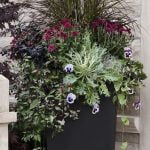Are you looking for vegetable gardening ideas for small yards? Limited space doesn’t have to limit your ability to grow your own fresh produce. With the right strategies and techniques, you can maximize the potential of your small yard and enjoy a bountiful harvest right at home.
When it comes to vegetable gardening in small yards, choosing the right vegetables is crucial. You’ll want to select varieties that are well-suited for limited space and can thrive in containers or small garden beds. Additionally, creative container gardening techniques and vertical gardening tips can help you make the most of every inch of available space.
In this article, we’ll explore various strategies and ideas for successful vegetable gardening in small yards. From choosing the right vegetables to overcoming common challenges, we’ll provide practical tips and inspiration for maximizing your small yard’s potential as a thriving vegetable garden. Whether you’re a beginner or experienced gardener, there’s something here for everyone looking to cultivate their own small space oasis of fresh, homegrown produce.
Choosing the Right Vegetables for Limited Space
When it comes to vegetable gardening in small yards, choosing the right vegetables is essential for maximizing the limited space available. With careful planning and consideration, even the smallest of yards can yield a bountiful harvest of fresh produce. Here are some vegetable options that are ideal for small yard gardens:
- Leafy Greens: Lettuce, spinach, kale, and arugula are all excellent choices for small yard gardens. These vegetables can be grown in compact spaces and are perfect for container gardening.
- Herbs: Culinary herbs such as basil, parsley, chives, and mint are well-suited for small yards. They can thrive in containers or vertical gardens and add flavor to your cooking.
- Tomatoes: Compact or dwarf varieties of tomatoes are perfect for small yard gardens. These can be grown in containers or raised beds and provide a plentiful harvest throughout the growing season.
- Radishes: Quick-growing and space-efficient, radishes are an excellent choice for small yards. They can be interplanted with other vegetables to make the most of limited space.
In addition to these options, peppers, cucumbers, and carrots can also be successfully grown in small yard gardens with the right techniques and planning. By choosing vegetables that are well-suited to limited space gardening, you can enjoy a thriving garden even in a small outdoor area.
Ultimately, selecting the right vegetables for your small yard garden depends on your personal preferences and what you enjoy eating. Consider growing vegetables that you use frequently in your cooking and that will thrive within the constraints of a smaller garden space. With careful consideration and planning, you can create a productive and enjoyable vegetable garden in even the smallest of yards.
Creative Container Gardening Techniques
When it comes to vegetable gardening ideas for small yards, container gardening is a popular and practical option. Limited space doesn’t have to limit your ability to grow a variety of vegetables. With the right techniques, you can create a bountiful garden in containers, making the most out of your small yard.
Here are some creative container gardening techniques to help you maximize your small space:
1. Choose the Right Containers: Look for containers that are large enough to accommodate the root systems of your vegetables. Consider using traditional pots, hanging baskets, or even unconventional items like buckets, crates, or barrels.
2. Select the Appropriate Soil: Use high-quality potting mix specifically designed for container gardening. It should provide good drainage while retaining moisture and nutrients for healthy plant growth.
3. Companion Planting in Containers: Just because you have limited space doesn’t mean you can’t take advantage of companion planting. Pair complementary vegetables in the same container to maximize your harvest and deter pests naturally.
4. Vertical Container Gardens: Utilize vertical space by incorporating trellises, stakes, or hanging structures into your container garden. This technique allows you to grow vining crops like tomatoes, cucumbers, and beans without taking up valuable ground space.
5. Watering and Care: Container gardens require regular watering, as they tend to dry out faster than traditional gardens. Be diligent about checking soil moisture levels and providing consistent care for your container-grown vegetables.
By implementing these creative container gardening techniques, you can enjoy a thriving vegetable garden even in the confines of a small yard. Whether you’re growing herbs on a windowsill or cultivating a mini urban farm on a balcony, container gardening offers endless possibilities for growing fresh produce at home”.
Vertical Gardening Tips for Small Yards
When it comes to vegetable gardening ideas for small yards, vertical gardening is a great option for maximizing space. Vertical gardening involves growing plants upwards using trellises, stakes, or other support systems. This technique allows you to take advantage of the vertical space in your yard, making it ideal for those with limited ground space.
To get started with vertical gardening, consider selecting vegetables that naturally grow upward or can be trained to do so. Some examples include tomatoes, cucumbers, pole beans, and peas. These vining crops can thrive when grown vertically and will help you make the most of your small yard. Additionally, incorporating hanging baskets or wall-mounted planters can further optimize vertical space for growing various vegetables.
In addition to choosing the right vegetables for vertical gardening, it’s essential to provide sturdy support structures such as trellises or cages. These supports will help keep the plants upright as they grow and prevent them from overcrowding other areas of your yard. By implementing these vertical gardening techniques, you can enjoy a bountiful harvest of fresh produce while making efficient use of your small yard space.
Utilizing Raised Beds for Maximum Yield
Raised beds are a fantastic solution for maximizing vegetable gardening in small yards. By creating raised beds, gardeners can efficiently utilize the limited space available to grow a variety of vegetables. These structures provide better soil drainage, warmer soil temperatures, and improved accessibility for planting, weeding, and harvesting. Raised beds also help to prevent soil compaction and erosion, leading to healthier and more productive plants.
One of the advantages of raised bed gardening is the ability to customize the soil composition for optimal plant growth. Gardeners can mix their own blend of topsoil, compost, and other organic matter to create a nutrient-rich environment for their vegetables. This is particularly beneficial in small yard gardens with poor or compacted soil, as raised beds offer the opportunity to start fresh with high-quality growing medium.
In addition to increasing yield potential, raised beds also offer an aesthetically pleasing aspect to small yard vegetable gardening. They can be designed in various shapes and sizes to fit the available space while adding visual interest to the overall garden layout.
The defined boundaries of raised beds also help with organization and can contribute to reducing weed competition. With proper planning and maintenance, utilizing raised beds can be an effective strategy for small yard gardeners looking to optimize their vegetable-growing efforts.
Companion Planting Strategies for Small Gardens
When it comes to vegetable gardening ideas for small yards, companion planting is a great strategy to maximize space and create a balanced ecosystem within your garden. Companion planting involves growing different plants together that benefit each other in some way, such as repelling pests, attracting beneficial insects, or providing nutrients to the soil. This is particularly beneficial in small gardens where space is limited, and every inch of land counts.
One popular example of companion planting is the Three Sisters technique used by Native American tribes, which involves growing corn, beans, and squash together. The corn provides support for the beans to climb, while the beans add nitrogen to the soil, benefiting the corn and squash. In return, the low-growing squash plants act as living mulch, shading the soil and reducing water evaporation.
Another example of companion planting is pairing aromatic herbs like basil and cilantro with vegetables like tomatoes and peppers to help repel pests. Marigolds are also commonly planted among vegetable crops to deter nematodes and aphids. By incorporating these companion planting strategies into your small yard vegetable garden, you can make the most of your space while promoting plant health and productivity.
Using these companion planting strategies not only maximizes the potential of a small garden but also helps to create a natural balance within the ecosystem of your vegetable garden.
| Companion Plant | Benefit |
|---|---|
| Basil | Repels pests from tomatoes and peppers |
| Marigolds | Deters nematodes and aphids from surrounding crops |
Maximizing Sunlight and Shade in Small Yard Gardens
When working with a small yard for vegetable gardening, it is essential to make the most of the available sunlight and shade. Most vegetables require at least 6 hours of direct sunlight per day to thrive, so it’s crucial to assess the sunlight patterns in your yard.
Keep in mind that buildings, trees, and other structures may cast shadows that can affect your garden. Observing the sun’s movement throughout the day will help you determine where to plant sun-loving vegetables and where to create shaded areas for those that prefer cooler conditions.
In addition to traditional ground-level planting, consider utilizing vertical spaces to maximize sunlight exposure. Vertical gardening allows you to take advantage of sunny spots on walls, fences, or trellises. This technique is especially useful in small yards where horizontal space is limited. Tomatoes, cucumbers, beans, and peas are ideal candidates for vertical gardening and can flourish when provided with ample sunlight.
It’s also important to strategically place taller plants so they don’t block sunlight from reaching smaller ones. Companion planting is an effective strategy for maximizing sunlight utilization and creating harmonious growing environments. For example, planting tall sun-loving corn next to low-growing tomatoes can provide shade for the tomatoes while allowing them access to sufficient sunlight for healthy growth.
| Vegetable | Ideal Sunlight (Hours Per Day) |
|---|---|
| Tomatoes | 6-8 hours |
| Cucumbers | 6-8 hours |
| Peas | 4-6 hours |
| Corn | 6-8 hours |
By carefully planning your vegetable garden layout and considering the specific sunlight needs of each plant, you can make efficient use of your small yard space while ensuring that all your vegetables receive the light they need to thrive. Remember that proper placement based on sunlight requirements plays a significant role in the success of a small yard garden.
Overall,gardening ideas for small yards are crucial if you want a successful vegetable garden without needing acres of land – making smart choices about what veggies will work well when there isn’t much room really makes an impact.
Tips for Efficient Watering and Soil Management in Small Vegetable Gardens
When it comes to vegetable gardening in small yards, efficient watering and soil management are crucial for the success of your garden. Limited space means that every plant needs to make the most out of the available resources, and that includes water and nutrients from the soil. Here are some tips to help you maximize your watering and soil management in a small vegetable garden.
Watering Techniques
In a small yard, it’s important to make every drop of water count. Consider using drip irrigation systems or soaker hoses to deliver water directly to the base of your plants, minimizing evaporation and water waste. Additionally, investing in a rain barrel can help you collect rainwater for use in your garden, reducing your reliance on municipal water sources.
Soil Management Strategies
One way to optimize soil management in a small vegetable garden is by practicing crop rotation. This involves planting different types of vegetables in the same area each season, which helps maintain soil fertility and reduces the risk of disease. Adding organic matter such as compost or mulch to the soil can also improve its structure and nutrient content, promoting healthy plant growth.
Utilizing Smart Technology
For small yard vegetable gardening, consider using smart technology tools like moisture sensors or weather-based irrigation controllers. These devices can help you monitor soil moisture levels and adjust watering schedules based on real-time weather conditions, ensuring that your plants receive just the right amount of water without wastage.
By implementing these efficient watering and soil management techniques, even small yard vegetable gardens can thrive with proper care and attention. Taking steps towards sustainable practices not only helps conserve resources but also leads to healthier yields for your garden.
These strategies highlight how even those with smaller spaces can successfully grow their own produce. Whether through mindful planting choices or utilizing modern technology tools, there are plenty of ways to overcome space limitations when it comes to gardening.
Overcoming Common Challenges in Small Yard Vegetable Gardening
Small yard vegetable gardening comes with its own set of challenges, but with the right strategies and techniques, these challenges can be overcome to create a thriving and bountiful garden. From limited space to soil quality, there are a variety of obstacles that small yard gardeners may face, but with a bit of creativity and planning, these challenges can be addressed.
Maximizing Space
One of the biggest challenges in small yard vegetable gardening is maximizing the available space. Whether you have a tiny backyard or just a balcony, every inch counts when it comes to growing your own vegetables. Utilizing vertical gardening techniques such as trellises, hanging planters, and stacked containers can help make the most of limited space. Additionally, using raised beds can provide more planting area while keeping things organized and manageable.
Soil Quality
Another common challenge in small yard vegetable gardening is the quality of the soil. Many urban areas have compacted or poor-quality soil, making it difficult for plants to thrive. One solution is to use raised beds filled with high-quality soil, which allows you to control the growing environment. Another option is container gardening, where you can use potting mix specifically tailored for vegetables.
Pest Control
Dealing with pests can be a challenge for any gardener, but it can be especially tricky in small yards where space is limited. Companion planting-growing certain plants together that benefit each other-can help deter pests naturally. Additionally, practicing good garden hygiene by regularly removing dead or diseased plants can help prevent pest infestations.
By implementing these strategies and being creative with your small space, you can overcome the common challenges of small yard vegetable gardening and enjoy a productive and satisfying harvest.
Conclusion and Encouragement for Small Yard Gardeners
In conclusion, vegetable gardening in small yards is not only possible but can also be incredibly rewarding. With the right selection of vegetables, creative gardening techniques such as container and vertical gardening, and strategic use of raised beds and companion planting, small yard gardeners can still enjoy a bountiful harvest. It’s all about making the most of the limited space available and maximizing sunlight and shade to create an efficient and productive vegetable garden.
When faced with the challenge of limited space, small yard gardeners can look to innovative ideas such as hanging gardens, trellises, and wall-mounted planters to make the most of vertical space. Additionally, using raised beds can provide better soil management and maximum yield potential. By overcoming common challenges through efficient watering techniques and proper soil management, small yard gardeners can ensure the success of their vegetable gardens.
To all the small yard gardeners out there: don’t be discouraged by your limited space. With careful planning and implementation of these vegetable gardening ideas for small yards, you too can enjoy a flourishing garden brimming with fresh produce. Remember that even in a small space, there are endless possibilities for growing your own delicious fruits and vegetables. So roll up your sleeves, get your hands dirty, and start transforming your small yard into a thriving vegetable garden.

Welcome to my gardening blog! I am passionate about plants and enjoy sharing my knowledge and experiences with others. In this blog, I will write about everything related to gardening, from tips on how to get started to updates on my own garden projects.





